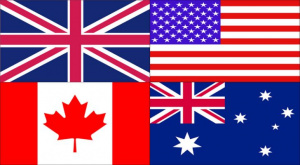Difference between revisions of "Language/English/Grammar/The-Hyphen-and-The-Dash"
m (Quick edit) |
|||
| (5 intermediate revisions by 2 users not shown) | |||
| Line 1: | Line 1: | ||
<div class="pg_page_title">Don’t confuse the hyphen (-) for the dash (–)</div> | |||
{{English-flag}} | |||
* Lesson 1: [[Language/English/Grammar/The-Hyphen-and-The-Dash|The Hyphen & the Dash]] | |||
* Lesson 2: [[Language/English/Grammar/More-Uses-of-the-Dash|More Uses of the Dash]] | |||
__TOC__ | |||
There’s a pair of punctuation marks in English that are frequently misused or unused. This is due to the fact that the proper use of these marks must be understood properly. The punctuation marks in question are the hyphen and the dash. | There’s a pair of punctuation marks in English that are frequently misused or unused. This is due to the fact that the proper use of these marks must be understood properly. The punctuation marks in question are the hyphen and the dash. | ||
<span link>Take a moment to explore these relevant pages as you conclude this lesson:</span> [[Language/English/Grammar/Verbosity-or-Circumlocution|Verbosity or Circumlocution]], [[Language/English/Grammar/Contractions|Contractions]], [[Language/English/Grammar/Introduce-yourself|Introduce yourself]] & [[Language/English/Grammar/Adverbs-of-Time|Adverbs of Time]]. | |||
==Definitions== | ==Definitions== | ||
The hyphen (-) is a punctuation mark that is used for various purposes which include: connecting words, writing compound numbers, dividing words into syllables, etc. | The hyphen (-) is a punctuation mark that is used for various purposes which include: connecting words, writing compound numbers, dividing words into syllables, etc. | ||
| Line 14: | Line 21: | ||
Note: Words which have their prefixes attached using a hyphen must always be written with the hyphen. | Note: Words which have their prefixes attached using a hyphen must always be written with the hyphen. | ||
== | ==Other Lessons== | ||
* [[Language/English/Grammar/That-v.s.-Which|That v.s. Which]] | |||
* [[Language/English/Grammar/Prepositions|Prepositions]] | |||
* [[Language/English/Grammar/Positions-of-Pronouns-in-Sentences|Positions of Pronouns in Sentences]] | |||
* [[Language/English/Grammar/CONJUNCTIONS-→-Contrast|CONJUNCTIONS → Contrast]] | |||
* [[Language/English/Grammar/Subjunctive-mood|Subjunctive mood]] | |||
* [[Language/English/Grammar/Although-VS-Even-though|Although VS Even though]] | |||
* [[Language/English/Grammar/Beside-and-Besides|Beside and Besides]] | |||
* [[Language/English/Grammar/The-Hyphen-and-The-Dash-(Part-2)|The Hyphen and The Dash (Part 2)]] | |||
* [[Language/English/Grammar/INDEFINITE-PRONOUNS|INDEFINITE PRONOUNS]] | |||
* [[Language/English/Grammar/Present-Tense|Present Tense]] | |||
<span links></span> | |||
Latest revision as of 23:14, 26 March 2023
- Lesson 1: The Hyphen & the Dash
- Lesson 2: More Uses of the Dash
There’s a pair of punctuation marks in English that are frequently misused or unused. This is due to the fact that the proper use of these marks must be understood properly. The punctuation marks in question are the hyphen and the dash.
Take a moment to explore these relevant pages as you conclude this lesson: Verbosity or Circumlocution, Contractions, Introduce yourself & Adverbs of Time.
Definitions[edit | edit source]
The hyphen (-) is a punctuation mark that is used for various purposes which include: connecting words, writing compound numbers, dividing words into syllables, etc. On the other hand, the dash (according to Merriam Webster’s Dictionary) is a punctuation mark used to show a break in thought or in structure of a sentence.
How to write the hyphen (-)[edit | edit source]
The hyphen is written as a very short horizontal line (-) at the middle of the height of the lowercase letters in a text. Example: multi-purpose. The hyphen is much shorter than the dash.
How to write the dash (–)[edit | edit source]
The dash is written as a short horizontal line (–) at the middle of the height of the lowercase letters in a text. The dash is much longer than the hyphen. It is nearly three times the size of the hyphen. From the above, it is clear that the dash and the hyphen can be easily told apart.
Use of the hyphen (-)[edit | edit source]
The hyphen is used in some cases to add a prefix to a word: co-debaters, ex-wife, etc. Note: Words which have their prefixes attached using a hyphen must always be written with the hyphen.
Other Lessons[edit | edit source]
- That v.s. Which
- Prepositions
- Positions of Pronouns in Sentences
- CONJUNCTIONS → Contrast
- Subjunctive mood
- Although VS Even though
- Beside and Besides
- The Hyphen and The Dash (Part 2)
- INDEFINITE PRONOUNS
- Present Tense
